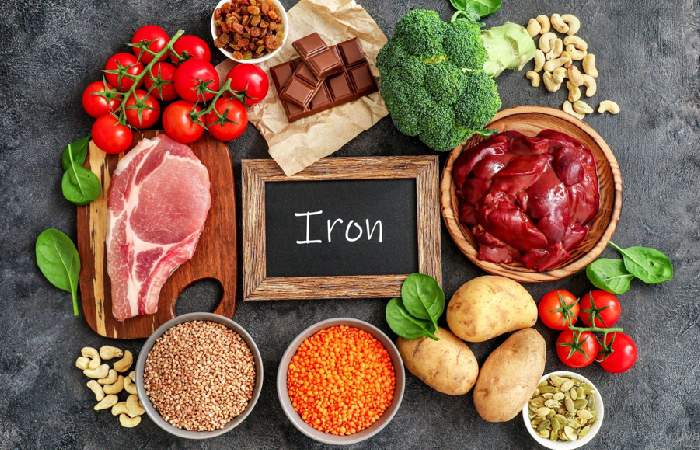Table of Contents
Definition
Adolescent nutrition deals with the dietary and nutritional requirements of people in their adolescent years, ranging from roughly 10 to 19.
In today’s fast-paced environment, adolescents face a range of dietary issues. Providing proper fuel to children cannot be overstated as their bodies undertake rapid development and growth. Adolescent nutrition covers nutritional requirements that develop due to physiological changes, such as an increased need for calcium, protein, iron, vitamin D, and other minerals for bone formation, muscle growth, and hormone changes.
Description of Adolescent Nutrition

Girls stop growing up 3 to 4 years after their first period, usually around 15. However, their body composition continues to evolve into adulthood with a physiological increase in fat mass.
On the other hand, boys experience a later growth peak, around 13 and a half, but grow and acquire muscles until the age of 19.
The Energy Need for Adolescent Nutrition
The recommended energy intake depends on the stage of growth, genetic factors, and the level of physical activity. It varies between 2,100 and 2,900 kcal per day for girls and 2,400 and 3,500 kcal for boys.
As an indication, here are the recommended intakes for an average level of activity:
- Girls from 13 to 19 years old: 2,400 kcal
- 14-year-old boys: 2,700 kcal
- 17-year-old boys: 3,000 kcal
For 30 minutes of walking per day and 2 to 3 hours of sport per week.
Carbohydrates, one of the critical nutritional contributions for adolescents
They are mainly present in starches and sugars. They turn into a simple sugar that is the primary fuel of the body. It is glucose. A teenager’s diet should include foods containing complex carbohydrates and limit simple carbohydrates.
It is suggested that adolescents consume no more than 20-30% fat in their diet. Fats provide energy and absorb vitamins A, D, E and K. However, if the young person consumes more fat than is advised, he will gain weight even if he does sports.
Nutrients to Watch Out For
Three minerals are essential in our diet. These are calcium, iron, and zinc. Indeed, they are directly linked to growth.
Therefore, the adolescent’s diet should contain foods that contain these minerals in reasonable quantities. Milk, clams, red meat, nuts, dark chocolate, sesame seeds, lamb meat, and oysters are mineral-rich foods.
Essential Micro Nutrients
Calcium
Puberty allows you to acquire 40 to 45% of bone mass. It is why the recommended intake of calcium, a significant component of the skeleton, is set at 1,200 mg per day until 19 years of age. To achieve the given figure, Recommending to consume four daily dairy products. These foods simultaneously provide good quality protein for growth.
Iron

Girls are particularly concerned as soon as they are settled since any blood loss causes a loss of iron, located in the red blood cells. But boys also need this trace element because of the increase in their muscle mass. The iron of animal origin, meats, offal, and seafood, is much better assimilated. If teens eat little of these foods, it’s a good idea to make sure with the family doctor that they don’t run out of iron by doing a blood test.
Importance of Vitamins in Adolescent Nutrition
To meet the nutritional requirements of adolescents nutrition, the intake of vitamins must not be unkempt. For example, vitamin A is involved in cell growth, differentiation, proliferation, and reproduction. As for it, vitamin D is necessary for the process of calcification of bones.
Vitamins B12, B6, B9 riboflavin, niacin, and thiamine are involved in energy metabolism.
Therefore, it is essential to consider all these nutritional values to ensure adolescents a balanced diet.
Vitamin D
A conjugate deficiency of vitamin D and calcium may limit the increase in bone mass in adolescence. To achieve the recommended intake (5 mg per day), consuming 1-2 times a week fatty fish is desirable.
The supplement is present in eggs, cheeses, offal. It is wise to opt for milk enriched with vitamin D. When a teen lives in a low-sun area, it is possible to consider a drug supplementation of vitamin D with the doctor.
Vitamin B9
Essential for the production of new cells, vitamin B9 is vital during the growth phases. The concentration in green vegetables (broccoli, spinach, salads.), oleaginous dried fruits (almonds, hazelnuts.), cheeses, eggs.
Conclusion
Setting an example and educating children about healthy diets at different developmental stages is crucial for their overall well-being. Adolescent nutrition should consider energy needs, physical activity, growth rates, and health conditions. Adolescents benefit from education on healthy food choices and a balanced diet because it improves their general well-being and allows them to choose a healthy lifestyle.


